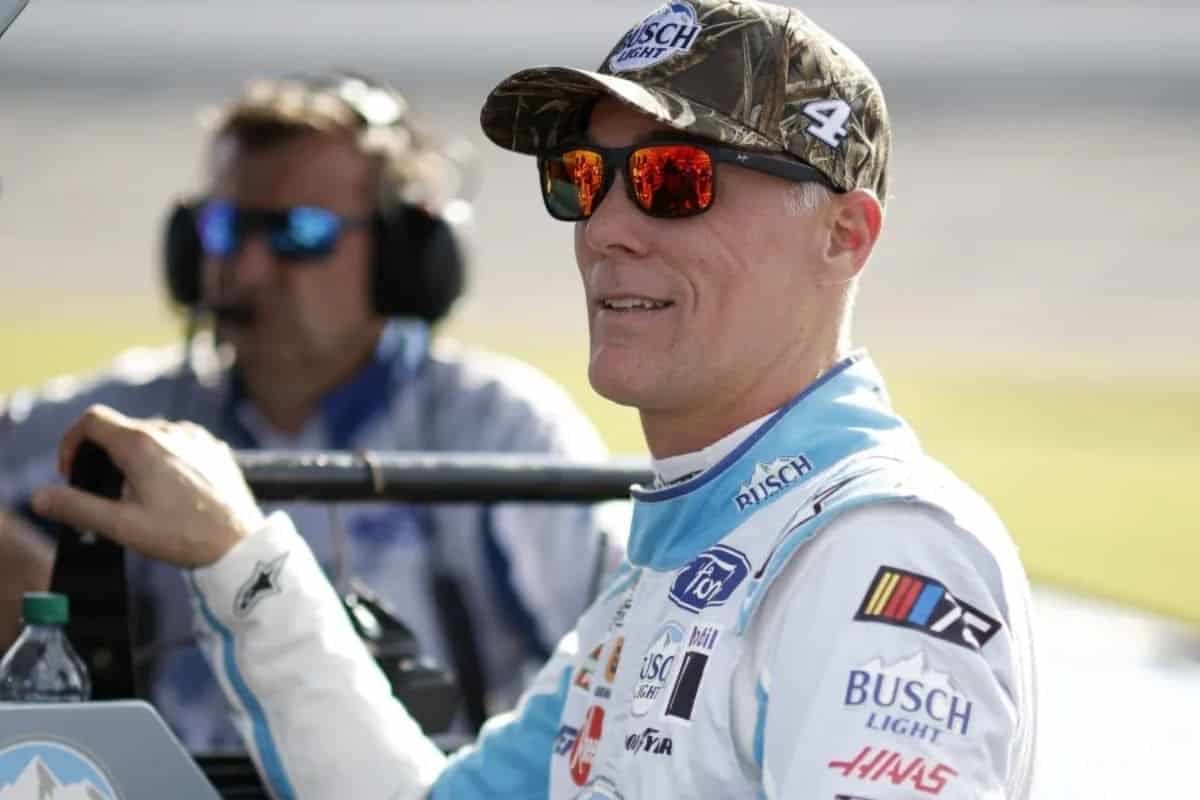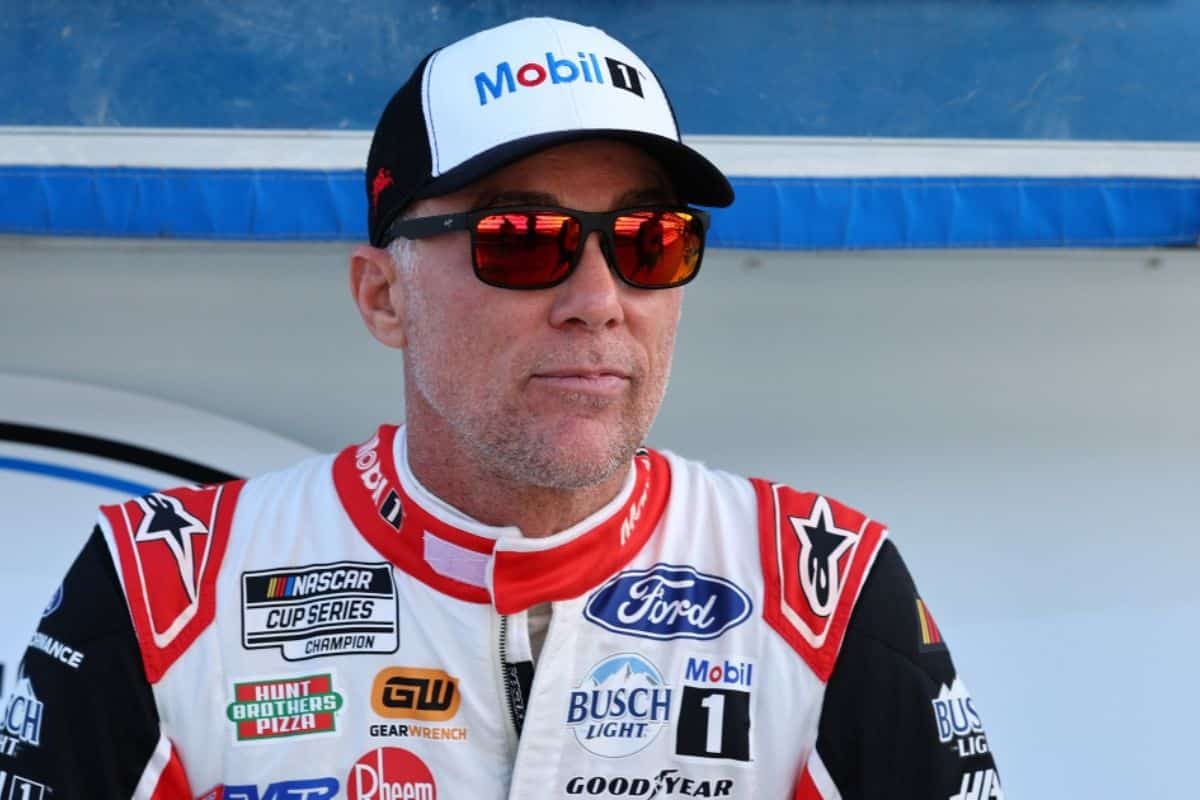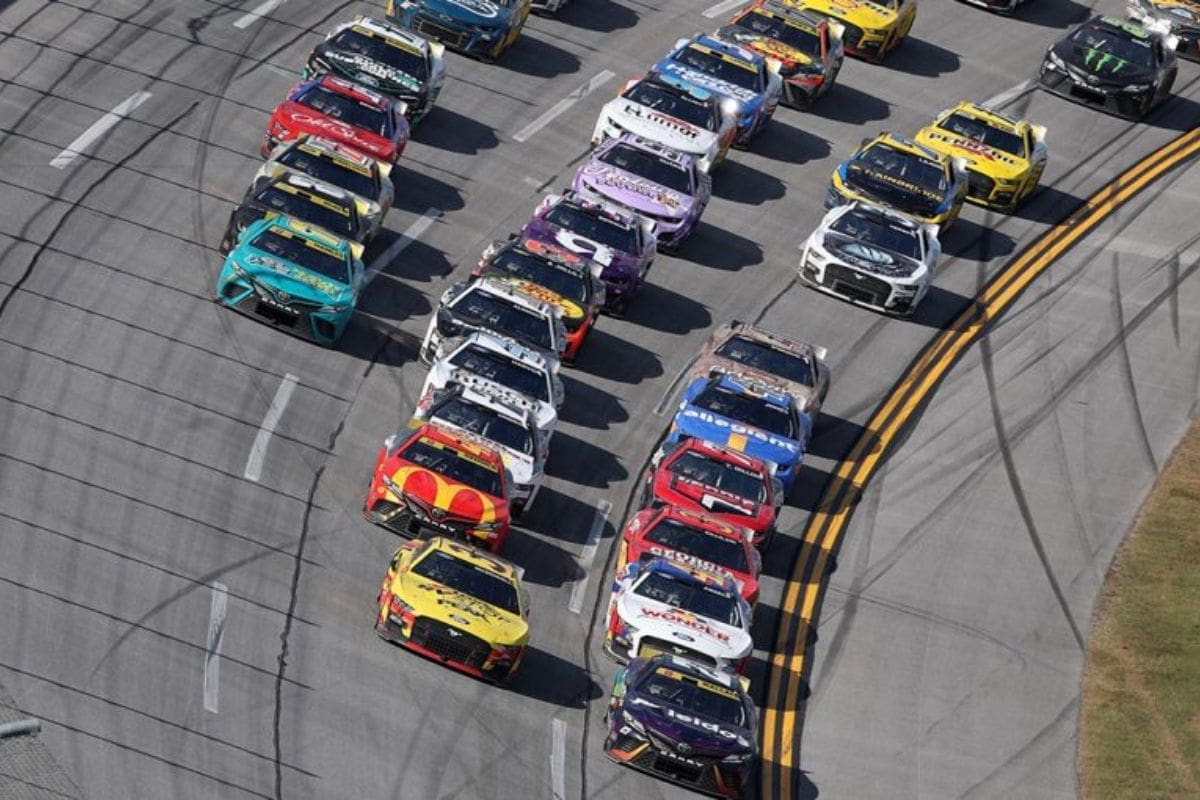Jeff Green Reveals Kevin Harvick’s Role: In an intriguing twist within the world of NASCAR, Jeff Green has recently disclosed details about Kevin Harvick‘s involvement in the contentious fallout at Richard Childress Racing, a revelation that offers fresh insights into the longstanding conflicts and turbulent dynamics of the team. This revelation sheds new light on the infamous Richmond Raceway incident and hints at deeper, underlying tensions that may have plagued the team. As we investigate Green’s perspective and subsequent actions, along with Richard Childress’s viewpoint, the complexities of internal team relations come into sharper focus.
Key Highlights
- Jeff Green disclosed Kevin Harvick’s arrival impacted team structure and dynamics at Richard Childress Racing.
- Green admitted personal tensions with Harvick from their Busch Series days affected their professional relationship.
- The Richmond Raceway incident highlighted the lack of communication and coordination between Harvick and Green.
- Green’s public admission and candid reflections brought attention to deeper issues within Richard Childress Racing.
- Green’s revelations provided context to the internal conflicts and team cohesion challenges exacerbated by Harvick’s presence.
Feuds in NASCAR and Harvick-Green Background
How often do we see teammates in NASCAR, a sport built on speed and strategy, become embroiled in personal feuds that ultimately impact their careers? Though rare, these conflicts have occasionally surfaced, leaving an indelible mark on the sport’s history.
Notable feuds include Bill Elliott versus Dale Earnhardt, Richard Petty versus David Pearson, and Rusty Wallace versus Darrell Waltrip. These rivalries, though intense, usually involved drivers from different teams. However, intra-team conflicts, like the one between Kevin Harvick and Jeff Green at Richard Childress Racing, are particularly striking due to their disruptive potential.
The discord between Harvick and Green was not a sudden eruption but rather a continuation of tensions that dated back to their days in the Busch Series. Their relationship was marred by multiple on-track altercations long before they found themselves under the same team banner. One might assume that sharing a team would foster cooperation and mutual respect, but this was not the case for Harvick and Green.
Their feud reached a boiling point during their time at Richard Childress Racing, culminating in an incident that served as the final straw for team management. The repercussions were severe, leading to Jeff Green’s dismissal from the team.
In a candid conversation with Dale Earnhardt Jr., Green recounted the series of events that led to his departure, shedding light on the strained dynamics between the two drivers. This dispute underscores the fragility of team harmony in NASCAR and serves as a stark reminder of how personal conflicts can have professional consequences, even in a sport where teamwork is paramount.
Tempers Flaring at Richmond Raceway
Tempers flared dramatically at Richmond Raceway when a collision between teammates Kevin Harvick and Jeff Green ended Green’s race, highlighting the underlying tensions within Richard Childress Racing. The incident unfolded on Lap 268, a critical juncture in the race, as the field was maneuvering through the tight turns of Richmond International Raceway. Ward Burton and Ryan Newman tangled, forcing Green to steer to the bottom of the track in an attempt to avoid a wreck. Unbeknownst to Green, Harvick was already occupying that space, resulting in a collision that sent Green’s No. 30 car careening into the turn-two wall.
“The whole year happened basically. Harvick took my team from the year past, from 2002. Crew chief went on, most of my guys went over there cause the 29 wasn’t running as good as the 30. I just felt like I was the stepchild. I don’t think my equipment was any different. The people surrounding is what makes the difference sometimes so it was just stuff building up in me.” -jr
The fallout from this incident was immediate and palpable, exacerbating existing friction within the team. Several key points of contention emerged from the collision:
- Strategic Misalignment: The collision highlighted a lack of communication and coordination between the drivers and their spotters, a critical component in avoiding such incidents.
- Personal Tensions: The incident brought to the surface personal disagreements between Harvick and Green, which had been simmering throughout the season.
- Team Dynamics: The crash underscored deeper issues within Richard Childress Racing, raising questions about team cohesion and the effectiveness of current leadership strategies.
The immediate aftermath saw emotions run high, with both drivers expressing their frustrations publicly. Green’s race-ending crash not only cost him valuable points but also intensified the scrutiny on team management.
Jeff Green’s Perspective
Jeff Green’s perspective on the fallout at Richmond Raceway reveals deeper issues that had been brewing within Richard Childress Racing throughout the season. According to Green, the incident was not an isolated event but rather the culmination of ongoing struggles and internal dynamics within the team. Green specifically pointed to the reorganization of resources and personnel as a significant factor contributing to his sense of being marginalized.
In an interview with Dale Earnhardt Jr., Green elaborated on the underlying issues. He explained that Kevin Harvick’s arrival had a marked impact on the team structure. ‘Harvick took my team from the year past, from 2002. Crew chief went on, most of my guys went over there because the 29 wasn’t running as good as the 30,’ Green stated. This reassignment left him feeling like the ‘stepchild’ within the organization, despite his belief that his equipment remained consistent. The difference, he noted, lay in the quality and cohesion of the team surrounding the driver, which is often a decisive factor in racing success.
View this post on Instagram
Green’s comments suggest a deeper organizational challenge within Richard Childress Racing, where the reallocation of top talent to bolster one team inadvertently weakened another. This shift likely disrupted the synergy that Green had come to rely on, leading to mounting frustration over the season. Green’s acknowledgment that ‘it was just stuff building up in me’ indicates that the Richmond fallout was but the tipping point of accumulated grievances.
Green’s Actions Post-Incident
Following the Richmond Raceway incident, Jeff Green’s subsequent actions were characterized by candid reflections and immediate repercussions. In the aftermath of being wrecked by Kevin Harvick, Green openly expressed his frustrations on camera, a decision he later acknowledged as a misstep. This candidness led to a series of significant developments in his professional life.
Public Admission: Green did not shy away from admitting his mistake. In his own words, he recognized the imprudence of his televised outburst directed at his former crew chief, Todd Berrier. Green stated, ‘I should have known better. I was more grown up than that.’ This admission underscores his awareness of the professional decorum expected in such high-stakes environments.
Understanding the Fallout: Green’s reflections also revealed his comprehension of the broader implications of his actions. He acknowledged Richard Childress’s perspective, noting, ‘I understand Richard’s dealings with it. I mean I told him that I felt like I was the alternate team at RCR and I understand why that made his team look bad.’ This statement indicates Green’s grasp of the reputational impact his comments had on Richard Childress Racing (RCR).
“Harvick wrecked me for third three-quarters of the way through the race and I run my mouth to Todd Berrier which is my crew chief before and it was on camera. Steve Byrnes interviewed me and I should have known better. I was more grown up than that and I understand Richard’s dealings with it. I mean I told him that I felt like I was the second team at RCR and I understand why that made his team look bad. So he got rid of me and I went home.” – Green
Departure from RCR: The immediate consequence of Green’s actions was his departure from RCR. Green explained, ‘So he got rid of me and I went home.’ This succinctly encapsulates the swift and decisive response from Richard Childress, which left Green without a seat in the team.
Richard Childress’s Perspective and Similar Incidents
Richard Childress’s handling of intra-team conflicts and public controversies has often been marked by his candid and unfiltered communication. This approach was vividly demonstrated during the NASCAR Xfinity Series at Martinsville Speedway last year, where a collision between his drivers, Sheldon Creed and Austin Hill, led to a public reprimand from Childress. The incident occurred during the final lap, with both drivers vying for victory. The ensuing contact forced Hill into the wall, handing Justin Allgaier the win and relegating Hill to a 21st-place finish.
In the aftermath, Childress did not mince words. His frustration was palpable as he labeled Creed’s actions as ‘stupid,’ emphasizing his disappointment with the lack of team cohesion. ‘I’ve had drivers drive for me before but nobody as stupid as Sheldon Creed. You don’t do that as a team player,’ Childress remarked. His blunt assessment underscored his expectation for collaborative effort among teammates.
This incident, while not the sole factor, contributed to Sheldon Creed’s departure from Richard Childress Racing at the end of the season, as he moved on to Joe Gibbs Racing. Meanwhile, Austin Hill remained with the team, continuing to drive the No. 21 Chevrolet Camaro part-time in the NASCAR Cup Series.
Childress’s forthright style is not unique to this instance. His history is punctuated with similar incidents where he has favored direct communication over diplomatic tact. This approach, while sometimes controversial, underscores his commitment to team success and accountability. As a team owner, Childress’s no-nonsense demeanor serves both as a guiding principle and a stark reminder of the high standards he holds for his drivers.
News in Brief: Jeff Green Reveals Kevin Harvick’s Role
The revelation provided by Jeff Green regarding Kevin Harvick’s involvement in the fallout at Richard Childress Racing offers significant insight into the internal dynamics and conflicts within the team.
This disclosure sheds light on potential underlying tensions that may have influenced the incident at Richmond Raceway.
By understanding these internal factors, a more thorough perspective on the team’s performance and relationships is achieved, highlighting the complexities inherent in high-stakes competitive environments such as NASCAR.
ALSO READ: Kevin Harvick’s Bold Prediction: Chastain to Dominate Nashville



